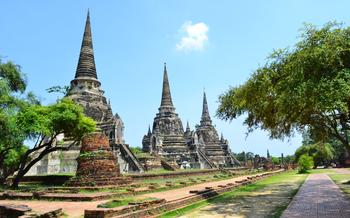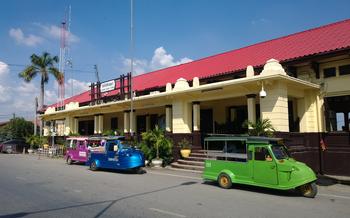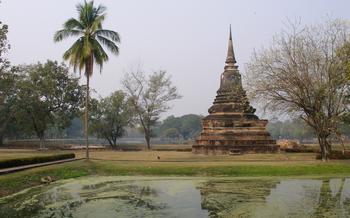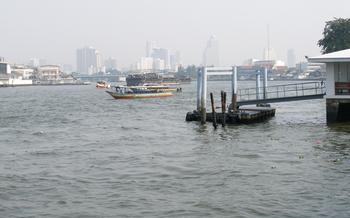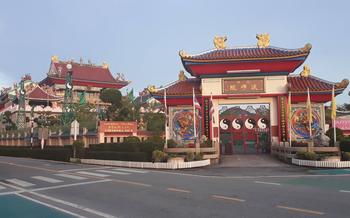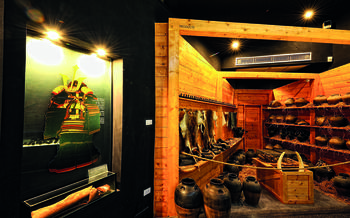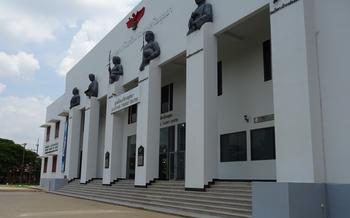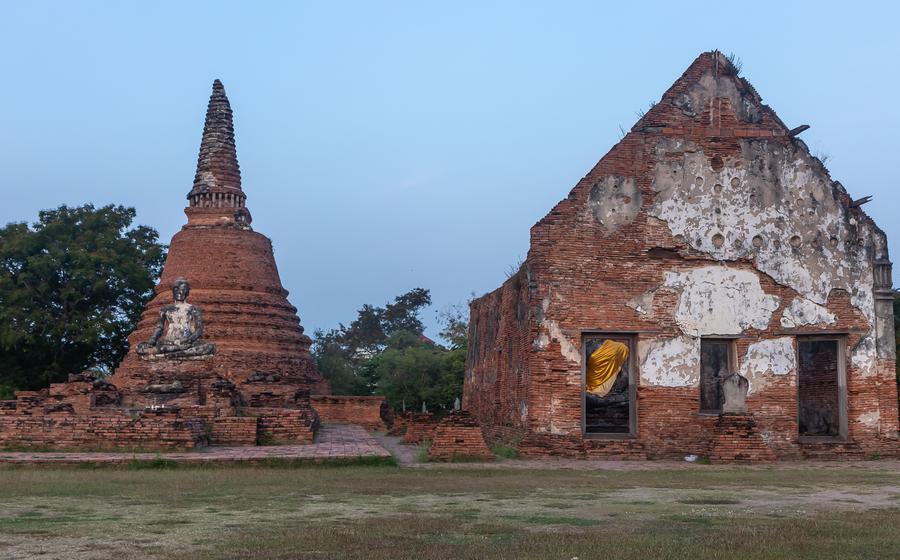
Ban Hollanda (Dutch Village)
- History of Ban Hollanda (Dutch Village)
- Location and Accessibility
- Preservation Efforts
- Architectural Highlights
- The Dutch Cemetery
- Other Historical Sites Nearby
- Local Cuisine and Dining Options
- Accommodation Options
- Shopping for Souvenirs
- Cultural Events and Festivals
- Photography Tips
- Ethical Considerations
- Off-the-Beaten-Path Experiences
- Recommended Tours
- Insider Tip: Unveiling the Hidden Gem of Ban Hollanda
History of Ban Hollanda (Dutch Village)
During the 17th and 18th centuries, Ayutthaya, the former capital of Thailand, was a thriving hub of international trade. Among the foreign communities that called the city home were the Dutch, who established a significant presence in the area. The Dutch East India Company (VOC) set up a trading post in Ayutthaya in 1604, and over time, a growing community of Dutch merchants, traders, and missionaries settled in the city.
In 1632, King Prasat Thong granted the Dutch permission to build their own village outside the city walls. This settlement, known as Ban Hollanda (Dutch Village), became a vibrant and prosperous enclave, reflecting the strong economic and cultural ties between the Dutch and the Siamese kingdoms.
However, the Dutch presence in Ayutthaya declined in the late 18th century due to various factors, including the rise of competing European powers and the decline of the VOC's monopoly on trade. As a result, Ban Hollanda was eventually abandoned, and its buildings fell into disrepair.
Location and Accessibility
Ban Hollanda is situated on the west bank of the Chao Phraya River, approximately 80 kilometers north of Bangkok. It lies within the boundaries of Ayutthaya Historical Park, a UNESCO World Heritage Site. To reach the village, visitors can take a train from Bangkok's Hualamphong Station to Ayutthaya Station. From there, local buses or tuk-tuks can be used to cover the remaining distance. Alternatively, guided tours and day trips from Bangkok often include a visit to Ban Hollanda, providing a convenient and hassle-free option for travelers. For those exploring independently, self-guided tours are also feasible, with maps and information available at the Ayutthaya Historical Park Visitor Center.
Preservation Efforts
Despite the passage of time and the challenges of preserving historical sites, Ban Hollanda has undergone significant efforts to conserve and restore its remaining structures. Recognizing the importance of this unique heritage, the Thai government, in collaboration with international organizations and local communities, has implemented several initiatives to protect and revitalize the village.
One of the key challenges faced in preserving Ban Hollanda's historical integrity is the delicate balance between conservation and development. While the village's charm lies in its authenticity, it is essential to ensure that any restoration or renovation projects are carried out in a sensitive and sustainable manner. This involves using traditional materials and techniques to maintain the original character of the buildings, while also incorporating modern conservation practices to ensure their long-term stability.
Ongoing projects include the restoration of the Dutch cemetery, which has been neglected for many years. This involves cleaning and repairing the gravestones, as well as landscaping the grounds to create a peaceful and respectful environment for visitors. Additionally, there are plans to establish a visitor center and museum within the village, which will provide historical context and information about the Dutch community in Ayutthaya. These efforts aim to not only preserve the physical remnants of Ban Hollanda but also to educate and engage the public about its rich history and significance.
Architectural Highlights
The architectural style of Ban Hollanda is a unique blend of Dutch and Thai influences, reflecting the cultural exchange that took place between the two communities. The Dutch brought their own architectural traditions, which were then adapted to suit the local climate and materials. The most striking feature of the village is the use of red bricks, a material that was not commonly used in traditional Thai architecture. The bricks were imported from the Netherlands and used to construct churches, warehouses, and residences.
Among the notable buildings in the village is the Dutch Reformed Church, which was built in 167The church is a simple yet elegant structure, featuring a gabled roof, arched windows, and a bell tower. The interior of the church is adorned with beautifully carved wooden pews and a pulpit. Other prominent buildings include the East India Company warehouses, which were used to store goods that were traded between the Dutch and the Siamese. The warehouses are large, sturdy structures with thick walls and high ceilings. The residences in the village are typically single-story buildings with wooden frames and brick walls. They feature gabled roofs, shuttered windows, and verandas.
The fusion of Dutch and Thai architectural styles is evident throughout the village. The Dutch buildings are characterized by their symmetrical design, use of red bricks, and large windows. The Thai influence can be seen in the use of wooden elements, such as carved gables and verandas. The result is a unique and charming architectural style that is found nowhere else in Thailand.
The Dutch Cemetery
The Dutch Cemetery is a historical site located within the village of Ban Hollanda that serves as the final resting place for many Dutch merchants and traders who played a significant role in Ayutthaya's history. Established in the 17th century, the cemetery features a collection of well-preserved graves and memorials, each adorned with intricate carvings and inscriptions that tell the stories of the individuals buried beneath. Prominent figures from the Dutch community, including governors, merchants, and missionaries, were laid to rest here, making it a valuable site for understanding the Dutch presence in Ayutthaya and their contributions to the city's development.
In recent years, the cemetery has undergone significant restoration efforts to preserve its historical integrity and ensure its continued existence as a heritage site. Conservationists have worked meticulously to clean and repair the tombstones, restoring them to their former glory. The cemetery's serene atmosphere and well-maintained grounds invite visitors to reflect on the lives and legacies of the Dutch settlers who once called Ayutthaya their home.
Other Historical Sites Nearby
Beyond the confines of Ban Hollanda, Ayutthaya offers a treasure trove of other historical sites that invite exploration. A short walk from the Dutch Village, you'll find the majestic Wat Ratchaburana, an ancient temple complex renowned for its towering prang (reliquary towers) and intricate bas-reliefs depicting scenes from Thai mythology. Continue your journey to the grand Ayutthaya Historical Park, a UNESCO World Heritage Site, where you can marvel at the ruins of palaces, temples, and fortifications that once stood as testaments to the kingdom's grandeur. Don't miss the iconic Wat Mahathat, with its iconic Buddha head entwined by the roots of a bodhi tree, a poignant symbol of the city's resilience. For those seeking a deeper dive into Ayutthaya's royal heritage, the Bang Pa-In Royal Palace, set amidst tranquil gardens and waterways, offers a glimpse into the lavish lifestyle of the Siamese monarchs. Plan a comprehensive itinerary that allows you to delve into the rich history and cultural tapestry of this ancient capital.
Local Cuisine and Dining Options
The Dutch influence on Ayutthaya's culinary scene has left a lasting legacy. While Thai cuisine remains the dominant force, there are several restaurants and eateries in Ban Hollanda that offer a unique blend of flavors. Try the "Dutch Spring Rolls," a crispy pastry filled with minced chicken, vegetables, and a hint of nutmeg. Another must-try is the "Ayutthaya Satay," where succulent chicken or beef skewers are marinated in a blend of coconut milk, turmeric, and coriander, paying homage to both Thai and Dutch culinary traditions.
For a truly authentic experience, head to the local markets and food stalls. Sample the freshly caught fish from the Chao Phraya River, grilled to perfection and served with a tangy tamarind sauce. Don't miss the "Khao Soi," a northern Thai specialty featuring egg noodles in a rich coconut curry broth, often topped with crispy noodles and pickled mustard greens.
Remember to embrace the local dining customs. Thais typically share dishes family-style, so don't be afraid to order a variety of dishes and share them with your companions. And when it comes to bargaining at the markets, be polite and friendly, and don't be afraid to haggle gently for the best prices.
Accommodation Options
When planning your stay in Ayutthaya to explore Ban Hollanda, you'll find a range of accommodation options to suit your preferences and budget. While there are no hotels or guesthouses located within the village itself, there are several options within easy reach.
For those seeking a comfortable and convenient base, hotels in the city center of Ayutthaya offer a variety of choices. Ranging from budget-friendly options to upscale establishments, these hotels provide easy access to Ban Hollanda and other historical attractions.
If you prefer a more immersive experience, consider staying at a traditional Thai-style guesthouse. These guesthouses often offer a glimpse into local life and culture, with charming accommodations and warm hospitality. Many guesthouses are located within walking distance of Ban Hollanda, allowing you to fully explore the village on foot.
For budget travelers, there are several hostels and guesthouses that offer affordable dorm-style accommodations. These hostels provide a social environment and a chance to meet fellow travelers. Some hostels also organize activities and tours, making it easy to connect with others and explore the area.
When choosing your accommodation, consider factors such as proximity to Ban Hollanda, your budget, and the amenities you desire. With a bit of research, you're sure to find the perfect place to stay for your visit to this historical and captivating village.
Shopping for Souvenirs
Ban Hollanda offers a unique shopping experience, blending traditional Thai crafts with influences from the Dutch heritage of the village. Explore the local markets and shops to find a variety of souvenirs and handicrafts that reflect the unique character of this historical site. From hand-painted ceramics and intricate wood carvings to woven textiles and Dutch-inspired souvenirs, there's something for every taste and budget.
Be sure to look out for items that showcase the fusion of Thai and Dutch cultures, such as traditional Thai silk scarves with Dutch floral motifs or miniature replicas of the village's iconic buildings. Bargaining is expected and part of the fun, so don't be afraid to negotiate for the best prices.
For a truly authentic experience, visit the Ban Hollanda Handicraft Center, where you can witness local artisans creating their unique products. You can even try your hand at some of the traditional crafts, such as pottery, weaving, or wood carving, under the guidance of experienced craftsmen.
Cultural Events and Festivals
Ban Hollanda, with its rich Dutch heritage, plays host to a variety of cultural events and festivals that celebrate the unique fusion of Thai and Dutch traditions. The most prominent of these is the annual Ayutthaya World Heritage Festival, held in December. This grand celebration showcases traditional Thai and Dutch performances, art exhibitions, historical reenactments, and a lively market filled with local crafts and delicacies.
Another must-see event is the Ban Hollanda Dutch Festival, held in February. This festival pays homage to the Dutch community's legacy with traditional Dutch games, music, dance, and food. Visitors can enjoy clog dancing, sample Dutch cheeses and pastries, and even try their hand at traditional Dutch crafts.
To fully immerse yourself in the local culture, be sure to visit during one of Thailand's many traditional festivals, such as Songkran (Thai New Year) or Loy Krathong (Lantern Festival). These festivals are celebrated with great enthusiasm in Ban Hollanda, offering a chance to witness the vibrant Thai spirit and participate in age-old customs.
By planning your visit to coincide with one of these cultural events or festivals, you'll not only gain a deeper understanding of the Dutch influence on Ayutthaya but also experience the warmth and hospitality of the local community.
Photography Tips
Ban Hollanda is a photographer's paradise, with its charming streets, historical buildings, and lush greenery. To capture the best shots, choose a camera with a wide-angle lens to fit as much of the scene into your frame as possible. Use a tripod to steady your camera and avoid blurry images, especially when shooting in low-light conditions. Experiment with different aperture settings to control the depth of field and create a sense of depth in your photos. Early morning or late afternoon is the best time to visit for the most flattering light. Take your time and explore the village's hidden corners to find unique compositions and perspectives. Engage with the locals and ask for permission before taking their photos to show respect for their privacy.
Ethical Considerations
As a traveler, it's important to be mindful of the local community and their customs when visiting historical and cultural sites like Ban Hollanda. Respectful behavior and ethical considerations go a long way in preserving the integrity of these places and ensuring a positive experience for all.
When exploring Ban Hollanda, remember to:
- Dress appropriately, covering your shoulders and knees when visiting temples and other sacred sites.
- Be respectful of religious practices and ceremonies. Avoid talking loudly or taking photos during religious rituals.
- Ask permission before taking photos of local people, especially children.
- Minimize your environmental impact by reducing waste and properly disposing of trash.
- Support sustainable tourism by choosing tour operators that prioritize responsible practices and give back to the community.
By following these guidelines, you can contribute to the preservation of Ban Hollanda's rich heritage while ensuring a positive experience for both yourself and the local community.
Off-the-Beaten-Path Experiences
Beyond the main tourist attractions, Ban Hollanda offers hidden gems that reveal its authentic charm. Wander off the beaten path to discover old canals lined with traditional Thai houses, explore local temples with intricate murals and serene atmospheres, and visit local markets where vendors sell fresh produce, handmade crafts, and delicious street food. These lesser-known areas provide a glimpse into the daily lives of the local community and offer a more immersive experience for travelers seeking a deeper connection with the village's history and culture.
One such hidden gem is the Wat Yai Chai Mongkhon, a beautiful temple located a short walk from Ban Hollanda. This temple is known for its stunning murals depicting scenes from Thai mythology and history, as well as its peaceful atmosphere. Another off-the-beaten-path attraction is the Ban Hollanda Canal, which offers a serene escape from the hustle and bustle of the village. Visitors can take a leisurely stroll along the canal, admiring the traditional Thai houses and lush greenery that line its banks.
Recommended Tours
Exploring Ban Hollanda with a knowledgeable guide can greatly enhance your experience. Organized tours and guided walks are available, providing insights into the history, architecture, and cultural significance of the village. These tours often include visits to the main attractions, such as the church, warehouses, and Dutch cemetery, as well as hidden gems and lesser-known areas.
When selecting a tour operator, it's essential to choose a reputable company with experienced guides. Look for operators that offer small group sizes, ensuring a more personalized experience. Customized tours can also be arranged to cater to your specific interests, whether it's photography, history, or architecture.
By opting for a guided tour, you'll gain a deeper understanding of Ban Hollanda's rich heritage and the unique blend of Thai and Dutch cultures. The guides will share stories and anecdotes, bringing the village's past to life. Whether you're a history buff, an architecture enthusiast, or simply curious about this unique destination, a guided tour is highly recommended.
Insider Tip: Unveiling the Hidden Gem of Ban Hollanda
As you wander through the cobblestone streets of Ban Hollanda, keep an eye out for a hidden gem tucked away amidst the historical buildings. Nestled discreetly behind a row of old warehouses, you'll find a charming little café that serves authentic Dutch pancakes with a Thai twist. Indulge in the delightful fusion flavors as you soak in the tranquil ambiance of the café's garden, adorned with lush greenery and colorful flowers. This hidden gem offers a unique culinary experience that blends the best of both worlds, making it a must-visit spot for any traveler seeking an off-the-beaten-path adventure in Ban Hollanda.
